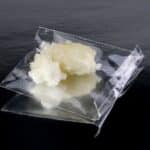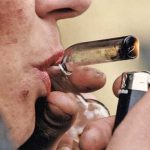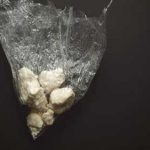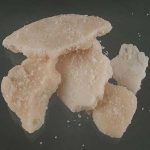Cocaine and its trafficking have been a serious problem in the United States for the better part of a century, and the emergence of crack cocaine as an alternate form of the drug only complicated and intensified the issue.
Today, however, drug policy experts, law enforcement officers, and those who use crack cocaine have a new concern: so-called “fake” crack cocaine.
What Is Fake Crack?
While fake crack may refer to anything sold deceptively as crack cocaine, including literal rocks, it also refers to a specific, emerging class of drugs known as synthetic cathinones, or bath salts.
Cocaine and bath salts have many similarities, explaining why drug dealers may choose to pass off bath salts as crack cocaine:
- both are controlled substances and using or possessing them is a crime
- both are highly addictive stimulant drugs that cause a rush of euphoria when used
- both can cause severe mental and physical effects when used, including overdose and sudden death
- both can be snorted (powder cocaine), smoked, swallowed, or prepared and injected
However, these substances also have a number of critical differences.
Bath Salts Vs. Cocaine
Unlike cocaine, bath salts are fully synthetic, meaning that they are entirely man-made and not extracted from a natural source as with cocaine and coca plants.
Bath salts are also generally cheaper than cocaine and are known to cause even more serious, unpredictable, and dramatic mental and physical effects when used.
How To Identify Real & Fake Crack
Unlike powder cocaine, which takes the form of a glossy white crystalline powder, crack cocaine looks like small nuggets or rocks with an off-white color, usually packaged in plastic bags. This color and the size and texture of crack cocaine can vary depending on the batch and how it is produced.
Bath salts, on the other hand, look like white or brown crystals or crystalline powder, though the form of the drug can vary a great deal depending on how it is produced and modified.
Lab Testing
While experienced persons may be able to tell the difference between crack and fake crack based on the appearance, smell, feel, and even the taste of these two different drugs, the only way to be entirely sure of what an illicit substance is to have it tested professionally.
Because testing isn’t a practical option for those who use illicit drugs, and because both cocaine and fake cocaine are harmful in the short and long term, it is extremely important that those who use these substances receive professional recovery treatment.
Effects Of Bath Salts/Fake Crack
Using bath salts to get high is very dangerous. 3,4-methylenedioxypyrovalerone (MDPV), the most common substance identified in the urine of those who are hospitalized for synthetic cathinone use, is estimated to be at least ten times more potent than cocaine by weight.
Effects of using this and similarly potent and unpredictable substances include:
- development of addiction and dependence
- reduced inhibition and social impulse
- increased sex drive
- paranoia
- hallucinations
- panic attacks
- dehydration
- chest pain
- increased heart rate
- spiking blood pressure
- excited delirium
Excited Delirium
Excited delirium refers to a controversial condition of extreme, life-threatening physical and mental agitation and disorientation, along with bizarre and violent behavior.
Individuals may shout or scream, strip off their clothing, flee from or attack those around them, and ignore pain.
While not recognized by the World Health Organization, American Psychiatric Association, or American Medical Association, the condition is often cited in the media and by police departments in cases where people who have overdosed on stimulant drugs have resisted restraint with unusual or even “superhuman” strength and ferocity.
Unfortunately, excited delirium is also strongly associated with sudden death, which is believed to occur due to cardiorespiratory collapse.
Treating Stimulant Addiction
Those who become addicted to stimulant drugs like cocaine, methamphetamine, amphetamines, or bath salts should seek out and participate in professional addiction treatment services.
Addiction treatment services include behavioral therapies like motivational interviewing, mental health counseling, and support groups.
To learn about our outpatient treatment options, please contact Northeast Addictions Treatment Center today.
Sources
Written by
Northeast Addition Editorial Team
©2024 Northeast Addition Center | All Rights Reserved
This page does not provide medical advice.





